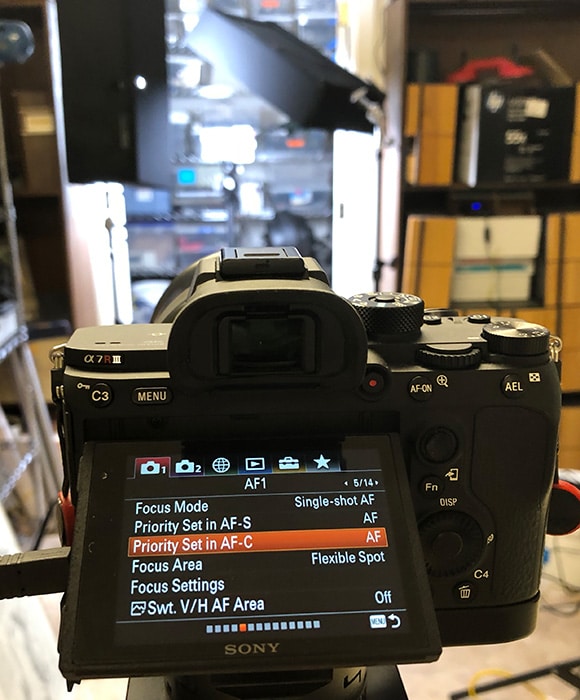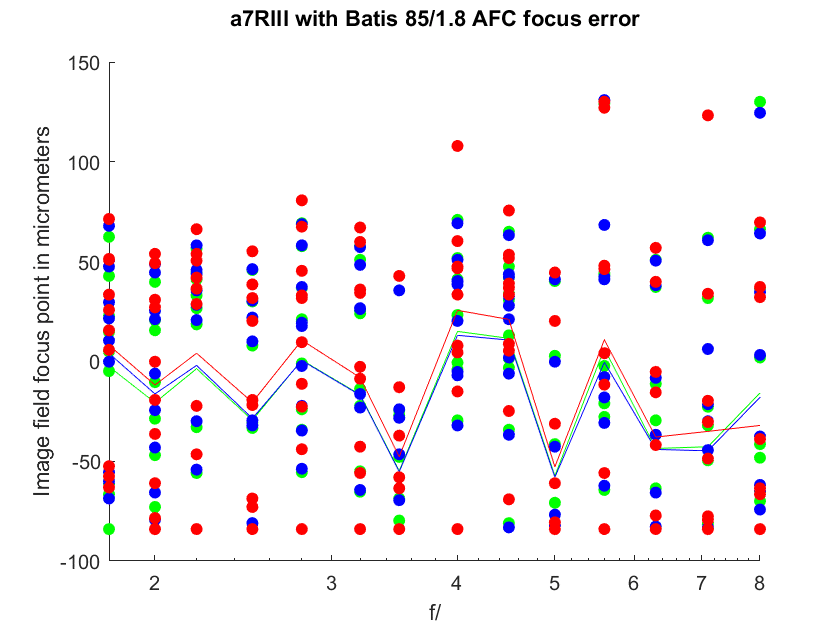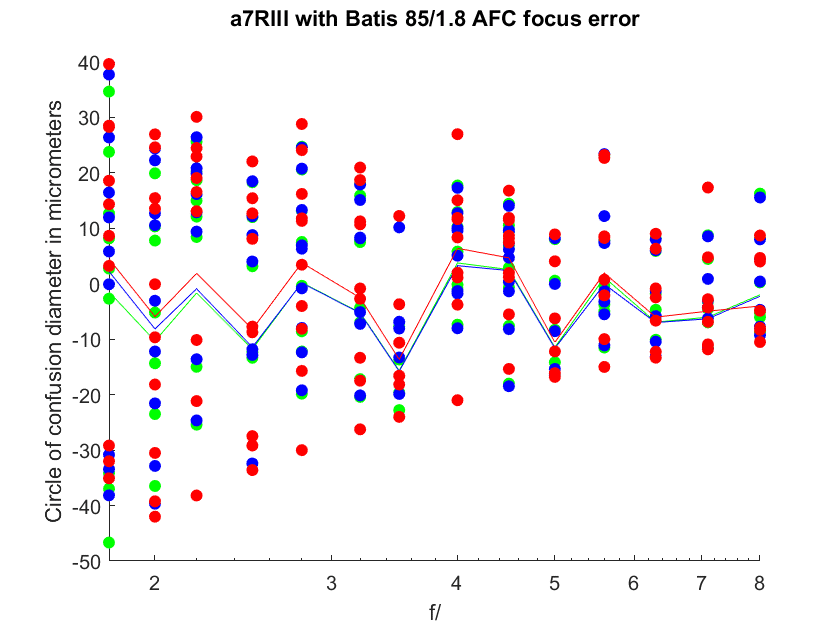This is a continuation of a series of posts on the Sony a7RIII. You should be able to find all the posts about that camera in the Category List on the right sidebar, below the Articles widget. There’s a drop-down menu there that you can use to get to all the posts in this series; just look for “a7RIII”.
In the previous post, I reported the disappointing news that, in AF-S mode, the a7RIII does not correct for spherical-aberration-induced focus shift with the Batis 85/1.8. In previous posts, I show that it doesn’t correct for such shift in the 90/2.8 macro, the 70–200/4 and the 100-400 lenses.
What about AF-C? in order to find out, I had to change the camera from my usual AF-C “balanced” priority, to “AF”.
With no further ado, here are the sensor-plane shifts at all the stops between wide open and f/8 with setting effect on, as before:
The dots are the samples, for each Adobe RGB color plane, with 10 shots per f-stop. The lines are the averages for all ten shots. Negative numbers indicate front focusing.
I have good news and bad news. The good news is that there appears to be little focus shift with aperture. The bad news is that there is a whole lot of sample variation, indicating instability in the focusing system in AF-C mode.
To find out how that will affect pictures, let’s look at the circles of confusion (CoCs) implied by the above misfocusing.
Negative numbers indicate front focusing, even though you can’t have a CoC with a negative diameter.
This is awful, compared to the exemplary precision of AF-S with this lens. With AF-S you get repeatable, but wrong results. When AF-C you get noisy, but — on average — correct ones. I will remind you that the pixel pitch on the a7RIII is about 4.5 micrometers, so we’re looking at a lot of blur here.
One good thing. In the field, I’ve found that this lens on the a7RIII, using AF-C and face detection, produces excellent results. So this may be a case of laboratory measurement revealing flaws that are not important in the real world.
Still, worst-case CoCs approaching 10 pixels looks pretty scary.



David Stock says
Thanks for this test. I wonder if the same results occur with the A7RII. I’ve experienced lots of low-level AF irregularities using the Batis 85 on the older body. I usually use AF-C and make more than one exposure (or use MF). I also find that holding down the focus button for a while in AF-C seems to help, at least when hand-holding. (Maybe the final contrast-detect routine gets more time to do its thing.) It’s interesting to track the changes in chosen focus plane by looking at the Batis’ digital focus readout. In my experience, this doesn’t necessarily repeat from one attempt to another, even on a tripod.
Martyn says
I’ve noticed this kind of thing with native E-Mount lenses often. It seems as though the AF totally fails once the Phase-Detect part is done. FE24-70Z was terrible for it on the a7II. I tried the Sigma 24-105 using the MC-11. That was just as bad. Lots of false focus hits where it would focus quickly to almost the right place and then just give up and hunt wildly.
The A-Mount 70-300G with the LA-EA3 had no such hunting issues so I switched the MC-11 for a Metabones in ‘green mode’ and the Sigma nails focus every time when using Phase-Detect only.
Switch to Contrast-Detect and the a7II can’t focus on anything at all (even wide open) so I have to surmise that the Hybrid-AF (and indeed the Contrast-AF) simply don’t work well at all.
I would love the option to disable Hybrid-AF for native lenses and just choose Phase-Detect.